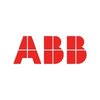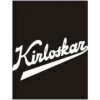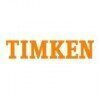Filter interviews by
The India Thermit Corporation Production Supervisor Interview Questions and Answers
The India Thermit Corporation Production Supervisor Interview Experiences
1 interview found
(2 Questions)
- Q1. 1 inch equal to??mm
- Ans.
1 inch is equal to 25.4 mm.
1 inch = 25.4 mm
To convert inches to millimeters, multiply by 25.4
For example, 2 inches is equal to 50.8 mm (2 x 25.4)
- Q2. Engineering title symbols
Interview Preparation Tips
Ex 1 inch=?? Mm etc
Engineering drawing symbols
Top trending discussions






Interview questions from similar companies

I applied via Company Website and was interviewed before Mar 2022. There were 2 interview rounds.

(2 Questions)
- Q1. Profile related questions
- Q2. Life Background related
Interview Preparation Tips

Production Supervisor Interview Questions & Answers
Lakshmi Machine Worksposted on 20 Mar 2025
I appeared for an interview in Feb 2025, where I was asked the following questions.
- Q1. How many years work experiance
- Q2. In duties your self and how do you working place
- Ans.
As a Production Supervisor, I oversee operations, ensure quality, and lead teams to meet production goals efficiently.
Manage daily production schedules to optimize workflow and meet deadlines.
Conduct regular team meetings to address challenges and motivate staff.
Implement quality control measures to ensure products meet standards, e.g., conducting inspections.
Collaborate with other departments, such as maintenance, to ...

I appeared for an interview in Aug 2024.
(6 Questions)
- Q1. What is rubber musication?
- Ans.
Rubber musication is the process of adding rubber to materials to improve sound insulation and vibration damping.
Rubber musication is commonly used in automotive industry to reduce noise from engines and road vibrations.
It is also used in construction industry to improve soundproofing in buildings.
Rubber musication can be achieved by adding rubber sheets or particles to materials like metal or plastic.
- Q2. MDR testing machine
- Q3. Why paraffin oil used in mixer banbary?
- Ans.
Paraffin oil is used in mixer banbary to prevent sticking and improve lubrication.
Paraffin oil helps prevent ingredients from sticking to the mixer banbary surfaces.
It improves lubrication, making the mixing process smoother and more efficient.
Paraffin oil can also help extend the lifespan of the mixer banbary by reducing wear and tear.
It may also aid in temperature control during the mixing process.
- Q4. Properties of sulfur
- Ans.
Sulfur is a chemical element with symbol S and atomic number 16, known for its yellow color and distinct smell.
Sulfur is a non-metal element found in nature as a pure element or in various compounds.
It is commonly used in the production of sulfuric acid, fertilizers, and rubber products.
Sulfur has a distinct smell often described as rotten eggs.
It is yellow in color and can be found in various forms such as crystals, p...
- Q5. How to improve Machine efficiency??
- Ans.
To improve machine efficiency, regular maintenance, proper training for operators, implementing automation, and monitoring performance are key.
Regular maintenance schedules to prevent breakdowns
Provide proper training for operators to optimize machine settings
Implement automation to streamline processes and reduce human error
Monitor machine performance regularly to identify areas for improvement
- Q6. During manufacturing process how to control scraps percentage??
- Ans.
To control scraps percentage during manufacturing process, implement strict quality control measures, optimize production processes, and train employees on waste reduction techniques.
Implement strict quality control measures to identify and address issues causing scrap
Optimize production processes to minimize waste and improve efficiency
Train employees on waste reduction techniques and the importance of minimizing scra...

I appeared for an interview in Sep 2024, where I was asked the following questions.
- Q1. Production planing, inventory, quality handling
- Q2. How to hand manpower ,what is your responce
- Ans.
Effective manpower management involves planning, communication, and motivation to optimize productivity and team performance.
Assess workforce needs: Analyze production schedules to determine the number of staff required for each shift.
Skill matching: Ensure that employees are assigned tasks that align with their skills and experience, enhancing efficiency.
Training and development: Provide ongoing training to improve sk...
- Q3. What line manufacturing,what is kanban,
- Ans.
Line manufacturing is a production method where products are assembled in a sequential manner, often using Kanban for efficiency.
Line manufacturing involves a series of workstations where tasks are performed in a specific order.
Kanban is a visual scheduling system that helps manage workflow and inventory levels.
For example, in an automotive assembly line, each station adds a specific component to the vehicle.
Kanban use...
- Q4. What to doing fifo mentain,creatical condition how to do manufacturing,
- Q5. How to planing,production, bottom neck
- Ans.
Effective planning and production management involves identifying bottlenecks and optimizing workflows for efficiency.
Identify production goals and timelines to align resources effectively.
Analyze workflow to pinpoint bottlenecks, such as machinery downtime or labor shortages.
Implement lean manufacturing techniques to reduce waste and improve efficiency.
Use tools like Gantt charts or Kanban boards for visualizing produ...
- Q6. What is poka yoka Production efficiency Production process equations Economic production functions M
- Ans.
Poka-yoke enhances production efficiency by preventing errors in processes, leading to improved quality and reduced waste.
Poka-yoke devices are simple tools designed to prevent mistakes, such as jigs that ensure parts are assembled correctly.
Production efficiency can be measured using metrics like Overall Equipment Effectiveness (OEE), which considers availability, performance, and quality.
Production process equations ...

I applied via Recruitment Consultant and was interviewed before Dec 2020. There were 3 interview rounds.
Interview Questionnaire
3 Questions
- Q1. Civil supervison
- Q2. Building & others consideration
- Q3. Building,pipe line,sturcher& office documentaction work
Interview Preparation Tips

Production Engineer Interview Questions & Answers
EMERSON PROCESS MANAGEMENTposted on 22 Apr 2021
Interview Questionnaire
1 Question
- Q1. Why you relive you job.

I applied via Naukri.com and was interviewed in Oct 2020. There were 3 interview rounds.
Interview Questionnaire
2 Questions
- Q1. Describe about your self
- Q2. What is kanban, How you ensure smooth inventory flow, How will you manage material shirtage, How will you handle manpower, How will you ensure smooth flow of material from vendor
- Ans.
Kanban is a lean manufacturing system that ensures smooth inventory flow. Material shortage is managed by effective planning and communication with vendors. Manpower is handled by proper training and allocation of resources.
Kanban is a visual system that helps in managing inventory levels and production flow
Effective planning and communication with vendors helps in managing material shortage
Proper training and allocati...
Interview Preparation Tips

I applied via Approached by Company and was interviewed in Jun 2022. There were 2 interview rounds.

Tools manufacturing production
Interview Preparation Tips
- Production

I applied via Company Website and was interviewed in Feb 2023. There were 2 interview rounds.

(6 Questions)
- Q1. 7 types of qc tools
- Ans.
7 QC tools are used for quality control in manufacturing. They are simple and effective tools to identify and solve problems.
Check sheets - used to collect data and analyze it
Pareto charts - used to identify the most frequent problems
Histograms - used to show the distribution of data
Cause-and-effect diagrams - used to identify the root cause of a problem
Flowcharts - used to show the steps in a process
Control charts - u...
- Q2. What is FMEA,what are the 5s,cp vs cps different
- Ans.
FMEA is a risk assessment tool used to identify and mitigate potential failures. 5S is a workplace organization method. CP and CPS are statistical process control measures.
FMEA stands for Failure Mode and Effects Analysis. It is a systematic approach to identifying and mitigating potential failures in a process or product.
5S is a workplace organization method that involves sorting, simplifying, sweeping, standardizing,...
- Q3. What is the ctq and ctc
- Ans.
CTQ stands for Critical to Quality and CTC stands for Critical to Customer.
CTQ is a measurable characteristic of a product or process that is important to the customer.
CTC is a measurable characteristic of a product or process that directly impacts customer satisfaction.
Identifying CTQs and CTCs helps in improving the quality of the product or process.
Examples of CTQs and CTCs include product reliability, on-time deliv...
- Q4. What are the different gauges
- Ans.
Gauges are instruments used to measure various physical quantities. There are different types of gauges for different purposes.
Pressure gauges measure pressure of fluids or gases
Temperature gauges measure temperature of substances
Thickness gauges measure thickness of materials
Wire gauges measure diameter of wires
Bore gauges measure diameter of holes
Thread gauges measure pitch and diameter of screws
Fuel gauges measure f
- Q5. What are the instrument handling
- Ans.
Instrument handling refers to the proper use, care, and maintenance of tools and equipment used in a particular field.
Properly clean and sterilize instruments before and after use
Handle instruments with care to prevent damage or contamination
Store instruments in a safe and organized manner
Regularly inspect instruments for wear and tear
Follow manufacturer's instructions for use and maintenance
Examples: surgical instrume
- Q6. Do you know the GD&T symbols
- Ans.
Yes, I am familiar with GD&T symbols.
GD&T stands for Geometric Dimensioning and Tolerancing
It is a system of symbols used to specify the dimensions and tolerances of a part
Examples of symbols include concentricity, perpendicularity, and flatness
Interview Preparation Tips
- Quality Control
The India Thermit Corporation Interview FAQs
Tell us how to improve this page.
The India Thermit Corporation Interviews By Designations
- The India Thermit Corporation Production Supervisor Interview Questions
- The India Thermit Corporation Executive Assistant Interview Questions
- The India Thermit Corporation Assistant Manager Interview Questions
- The India Thermit Corporation Civil Engineer Interview Questions
- The India Thermit Corporation Export Executive Interview Questions
- The India Thermit Corporation Data Entry Operator Interview Questions
- The India Thermit Corporation Site Supervisor Interview Questions
- The India Thermit Corporation Civil Engineer-Highway/Roadway Interview Questions
- Show more
Interview Questions for Popular Designations
- Production Engineer Interview Questions
- Production Manager Interview Questions
- Production Officer Interview Questions
- Executive Production Interview Questions
- Production Interview Questions
- Senior Production Engineer Interview Questions
- Production Chemist Interview Questions
- Production Operator Interview Questions
- Show more
The India Thermit Corporation Production Supervisor Interview Process
based on 1 interview
Interview experience
Interview Questions from Similar Companies

The India Thermit Corporation Production Supervisor Reviews and Ratings
based on 3 reviews
Rating in categories
|
Executive Accountant
10
salaries
| ₹1.8 L/yr - ₹4.5 L/yr |
|
Production Engineer
8
salaries
| ₹2.4 L/yr - ₹3.3 L/yr |
|
Maintenance Engineer
8
salaries
| ₹3.6 L/yr - ₹6.5 L/yr |
|
Site Incharge
7
salaries
| ₹1.9 L/yr - ₹4.2 L/yr |
|
Data Entry Operator
7
salaries
| ₹2 L/yr - ₹3.2 L/yr |

Thermax Limited

ABB

Isgec Heavy Engineering

Kirloskar Oil Engines
- Home >
- Interviews >
- The India Thermit Corporation Interview Questions >
- The India Thermit Corporation Production Supervisor Interview Questions







